Why can not you directly connect the copper wire with aluminum?
Content:
To hang a chandelier or lay a new line of wires in an old apartment, you often need to connect aluminum and copper wires. However, electricians categorically forbid such twists. We will understand why copper and aluminum cannot be twisted and how to connect conductors of different metals correctly.
Wiring difficulties
Modern rules for the creation of intra-apartment wiring (PUE) require that all conductors in the apartment be copper. However, in Soviet times, in order to save money in most houses, wiring was made of aluminum wires. Therefore, the tenants of the apartments of the old building often have the problem of connecting copper and aluminum conductors. There may be several reasons, for example:
- the need to build up broken aluminum wire;
- installation of an additional outlet;
- replacing the old chandelier with a modern one.
Usually the wires are connected in the simplest way - twisting. However, electricians categorically forbid twisting aluminum with copper. Such a connection is called fire hazardous and short-lived. However, not everyone is able to explain the reasons for the ban on the creation of such a connection.
What does physics say?
According to the laws of nature, when two metals are combined, a galvanic pair occurs. Since each metal has its own value of the electrochemical potential, at the point of contact, the couple will begin transporting electrons. Such processes occur, for example, in a battery. If an electrolyte is present at the contact point or the metals are under current, the rate of electron transfer from one metal to another will increase significantly.
Since the electrochemical potential of copper and aluminum differs significantly, galvanic processes at the junction proceed quickly. This leads to several unpleasant consequences:
- The appearance of an oxide film on the surface of an aluminum wire. These metal destruction products conduct electricity poorly and significantly reduce contact quality.
- Gradual corrosion will destroy the conductors and create gaps between them. This will also lead to poor contact.
In addition to the ability to form a galvanic pair, aluminum with copper have a high difference in their ability to expand when heated. Due to temperature differences, the conductors expand unevenly, which also leads to an increase in gaps and a decrease in contact quality.
Poor contact starts to warm up when current passes through it. Therefore, the place of twisting of copper and electric wires will quickly turn into a heat source. And there is not far from the fire. Therefore, electricians categorically prohibit the connection of copper and aluminum wires by twisting.
Some metals and alloys used in electrical engineering have a small difference in electrochemical potential and expansion coefficients. Such materials are called compatible. For aluminum, zinc, duralumin, and electrical steel are compatible. For copper - chrome, nickel, brass and bronze.
What to do if a connection is necessary?
Sometimes you still have to connect incompatible metals with each other. In such cases, special technological solutions are used that can improve the quality of contact. Let us examine some of them in more detail.
Terminal Block Connections
Terminal blocks, or terminal blocks, are consumables for a modern electrician.This is a contact group placed in a plastic case made of a copper alloy and coated with a layer of nickel. Using them is quite simple:
- It is necessary to strip the connected wires.
- Insert the ends into the opposite sockets of the block.
- Securely fasten by tightening the clamping screws.
If the aluminum core is pressed too hard, it may break. Therefore, do not over tighten the screws!
WAGO terminal blocks
A modern version of the terminal block, equipped with spring clips. It is enough to squeeze the presser feet, insert the stripped wires into place and again clamp. However, the accumulated experience in operating such pads revealed a number of disadvantages:
- Over time, the lock spring may loosen, resulting in poor contact and overheating.
- WAGOs are more expensive than conventional terminal blocks.
Bolt connection
An ordinary steel bolt equipped with three washers can also help reliably connect an aluminum conductor to a copper one. Rings are made at the ends of the wires, then they are put on a bolt. The order is: washer - copper - washer - aluminum - washer. Then the contact is carefully pressed with a nut and insulated.
The disadvantage of this method is the large size of the connection. It is suitable only for conductors of large cross section.
Thus, although it is impossible to connect copper with aluminum by twisting, because of the high fire hazard, there are safe connection methods for such wires. If you use one of them, you can not worry about the stability of contact and the protection of your home from fire.
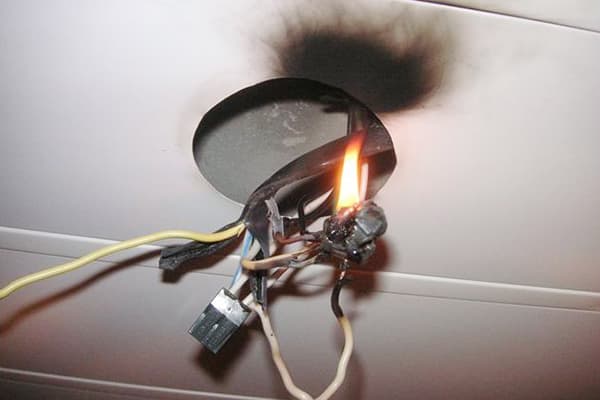
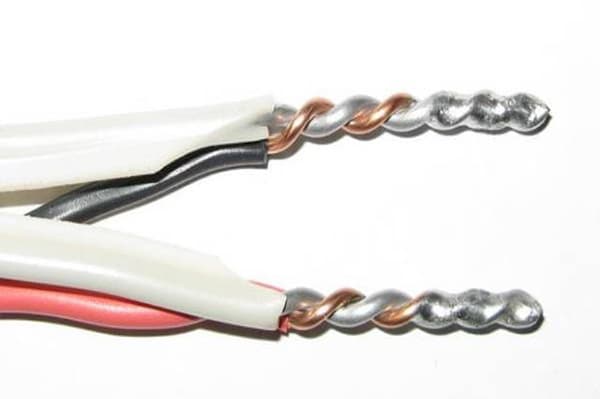
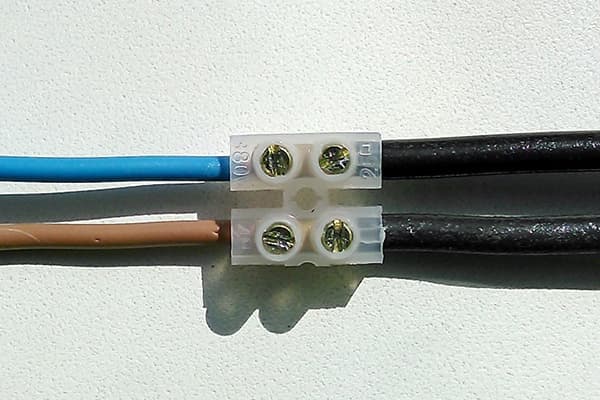
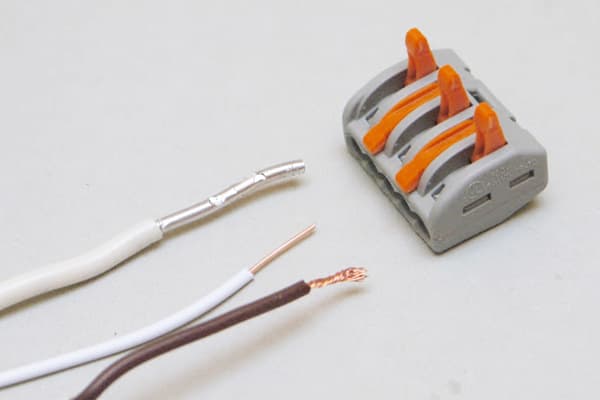
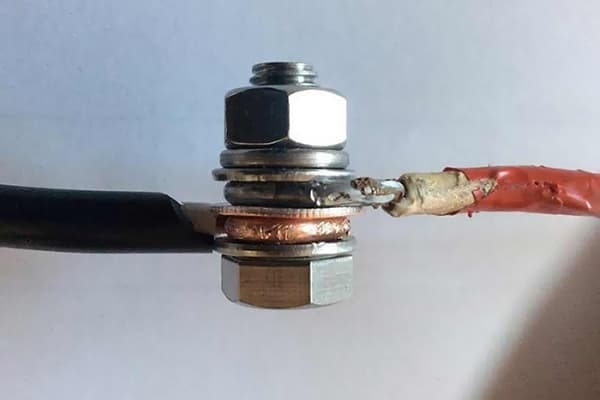
In the picture, Wago with orange reeds is designed only for copper wires
You won’t put Wago on outlets, if there is a load, the pressure contact is not designed, although it is written up to 25-32 amperes. Wago for lighting is normal. And aluminum is oxidized faster from copper, you can just tin the copper wire with a soldering iron. Then aluminum and copper can be combined.
It’s empty. I have long connected copper and aluminum wires with banal soldering: fluxes are now sold that can tin any aluminum alloy (except for such exotic as silumin).